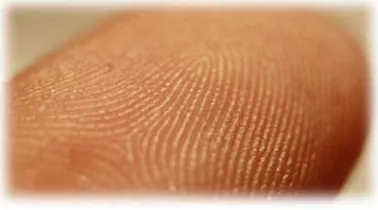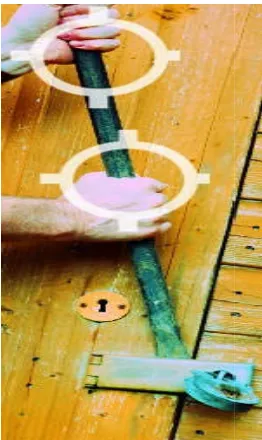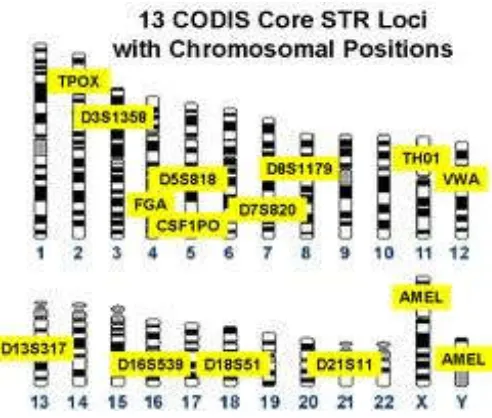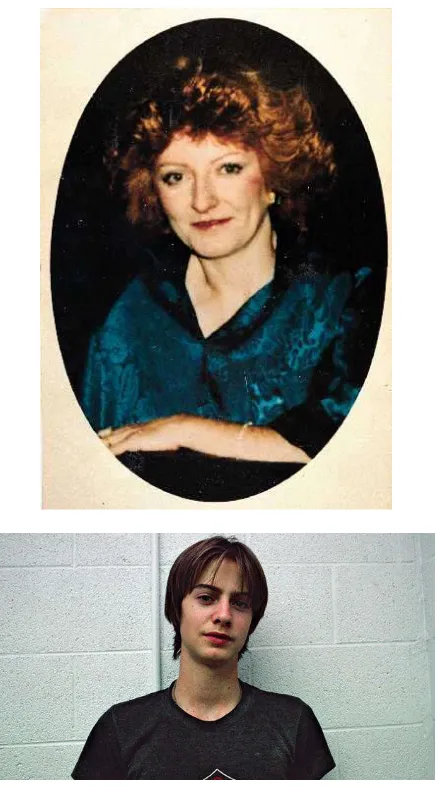TOUCH DNA: AN INVESTIGATIVE TOOL IN FORENSIC SCIENCE
Forensic Science Unit, University College of Science, Osmania
ARTICLE INFO ABSTRACT
Forensic Science is a multidisciplinary science which helps in crime investigation. To link a suspect to a crime, DNA
when a suspect comes in contact with the crime scene, there is a transfer of evidence from the crime scene to the suspect and vice
traces of his DNA on the surface which he comes in contact with. This DNA is referred to as touch DNA and can help in identification of the suspect involved in the crime. In crimes where identification of the suspect has prove
been an effective investigative tool. The present work throws light on the importance of touch DNA in criminal detection.
Copyright © 2016 Sowmyya. This is an open access article
distribution, and reproduction in any medium, provided the original work is properly cited.
INTRODUCTION
The crime rate in the world and in India in particular increasing alarmingly and the need for fast and effective methods of crime and criminal detection is also increasing. In some cases, there may be no biological evidence, physical evidence or any other visible evidence available to the investigators. In such cases, traces of DNA transferred from the suspect through contact with evidences found at the crime scene can help in crime investigation. The DNA transferred from the suspect due to touch is called touch DNA. Touch DNA also known as Contact Trace DNA is recovered from epithelial cells of skin as shown in Figure 1 that are transferred to surfaces when a person comes in contact with any surface. Human beings shed several skin cells every day and these cells may be transferred to surfaces of our skin co
crime is committed, the perpetrator of the crime may deposit sufficient number of skin cells on items found at crime scene like murder weapon, clothing, victim, questioned document, etc. These evidences if collected and DNA extracted may hel in linking the perpetrator to the crime scene. Usually, the lower skin cells are potential sources of DNA resulting in a good DNA profile. These cells are typically recovered when force is
*Corresponding author: Sowmyya, T.
Forensic Science Unit, University College of Science, Osmania University, Hyderabad – 500007, Telangana, India
ISSN: 0975-833X
Vol.
Article History:
Received 18th November, 2015
Received in revised form
05th December, 2015
Accepted 25th January, 2016
Published online 14th February,2016
Key words:
Touch DNA, Criminal identification, Forensic Science, Investigative tool.
Citation:Sowmyya, 2016. “Touch DNA: An investigative tool in
REVIEW ARTICLE
TOUCH DNA: AN INVESTIGATIVE TOOL IN FORENSIC SCIENCE
*Sowmyya, T.
Forensic Science Unit, University College of Science, Osmania University, Hyderabad
ABSTRACT
Forensic Science is a multidisciplinary science which helps in crime investigation. To link a suspect to a crime, DNA analysis has been playing a key role. According to the Locard’s exchange principle, when a suspect comes in contact with the crime scene, there is a transfer of evidence from the crime scene to the suspect and vice-versa. The suspect tends to leave the epi
traces of his DNA on the surface which he comes in contact with. This DNA is referred to as touch DNA and can help in identification of the suspect involved in the crime. In crimes where identification of the suspect has proved to be a potential challenge for investigators, touch DNA has been an effective investigative tool. The present work throws light on the importance of touch DNA in criminal detection.
is an open access article distributed under the Creative Commons Attribution License, which distribution, and reproduction in any medium, provided the original work is properly cited.
India in particular is increasing alarmingly and the need for fast and effective methods of crime and criminal detection is also increasing. In some cases, there may be no biological evidence, physical evidence or any other visible evidence available to the such cases, traces of DNA transferred from the suspect through contact with evidences found at the crime scene can help in crime investigation. The DNA transferred from the suspect due to touch is called touch DNA. Touch A is recovered from epithelial cells of skin as shown in Figure 1 that are transferred to surfaces when a person comes in contact with any surface. Human beings shed several skin cells every day and these cells may be transferred to surfaces of our skin contacts. When a crime is committed, the perpetrator of the crime may deposit sufficient number of skin cells on items found at crime scene like murder weapon, clothing, victim, questioned document, etc. These evidences if collected and DNA extracted may help in linking the perpetrator to the crime scene. Usually, the lower skin cells are potential sources of DNA resulting in a good DNA profile. These cells are typically recovered when force is
versity College of Science, Osmania 500007, Telangana, India.
[image:1.595.340.529.522.627.2]used such as on victim’s clothes or at a crime scene after a struggle has occurred. (http://www.dnaforensics.com/touchdna. aspx)
Figure 1. Touch DNA from epithelial cells of skin
According to the Locard’s exchange principle, “Every contact leaves trace”. In accordance with this principle, the transfer of DNA due to touch can help extensively in the crime investigation. The increasing number
crimes with no evidence are being investigated through Touch DNA technology. Probable evidences are being submitted to crime laboratories in a hope to recover traces of DNA transferred due to touch of the perpetrator.
The current paper studies the importance of touch DNA technology (Figure 2) in detecting the crime offender.
Available online at http://www.journalcra.com
International Journal of Current Research
Vol. 8, Issue, 02, pp.26093-26097, February, 2016
INTERNATIONAL
Touch DNA: An investigative tool in forensic science”, International Journal of Current Research
z
TOUCH DNA: AN INVESTIGATIVE TOOL IN FORENSIC SCIENCE
University, Hyderabad – 500007, Telangana, India
Forensic Science is a multidisciplinary science which helps in crime investigation. To link a suspect to analysis has been playing a key role. According to the Locard’s exchange principle, when a suspect comes in contact with the crime scene, there is a transfer of evidence from the crime versa. The suspect tends to leave the epithelial skin cells containing traces of his DNA on the surface which he comes in contact with. This DNA is referred to as touch DNA and can help in identification of the suspect involved in the crime. In crimes where d to be a potential challenge for investigators, touch DNA has been an effective investigative tool. The present work throws light on the importance of touch DNA in
ribution License, which permits unrestricted use,
victim’s clothes or at a crime scene after a http://www.dnaforensics.com/touchdna.
Touch DNA from epithelial cells of skin
According to the Locard’s exchange principle, “Every contact leaves trace”. In accordance with this principle, the transfer of DNA due to touch can help extensively in the crime investigation. The increasing number of property and violent crimes with no evidence are being investigated through Touch DNA technology. Probable evidences are being submitted to crime laboratories in a hope to recover traces of DNA transferred due to touch of the perpetrator. (Joe Minor, 2013) The current paper studies the importance of touch DNA technology (Figure 2) in detecting the crime offender.
INTERNATIONAL JOURNAL OF CURRENT RESEARCH
Figure 2. Touch DNA: An investigative tool
Methodology of touch DNA technology
To obtain a successful touch DNA profile, identifying potential evidences as depicted in Figure 3 which may be carrying traces of suspect’s DNA is the foremost task of the crime investigator. Once the potential evidence is identified, choosing a suitable sampling technique that will recover the maximum number of skin cells is another important challenge. There are various steps involved in touch DNA technology.
Figure 3. Transfer of epithelial cells from skin to physical evidence
1. Identifying the target surfaces and collection of trace DNA samples
The first important task of a forensic investigator is to identify the target surfaces which may contain traces of suspect DNA. In case of homicide, touch DNA of perpetrator can be recovered from the surface of murder weapon like revolver, knife, pistol, etc. In case of sexual assault, it can be recovered from the skin and clothing of the victim. In cases of burglary,
Touch DNA: An investigative tool
To obtain a successful touch DNA profile, identifying potential depicted in Figure 3 which may be carrying traces of suspect’s DNA is the foremost task of the crime investigator. Once the potential evidence is identified, choosing a suitable sampling technique that will recover the maximum number of er important challenge. There are various
Transfer of epithelial cells from skin to physical evidence
1. Identifying the target surfaces and collection of trace
The first important task of a forensic investigator is to identify the target surfaces which may contain traces of suspect DNA. In case of homicide, touch DNA of perpetrator can be recovered from the surface of murder weapon like revolver, tc. In case of sexual assault, it can be recovered from the skin and clothing of the victim. In cases of burglary,
the stolen item may have traces of DNA of the thief. In forgeries, the cells of the forgerer are transferred to the suspect document. These cells are sources of DNA which can be recovered and used for criminal detection. The touch DNA is usually present in trace quantities which may be lost by destructive methods. Hence, non
exposure of surfaces to different light sourc
Springer et al., 1994; et al., Ben Yosef
et al., 2002; Lennard and Stoilovic
Oorschot, 2006) and fingerprinting techniques can be
[image:2.595.333.530.191.356.2]employed for detection of the target surfaces.
Figure 4. Collection of touch DNA from murder weapon
The identification of potential evidences containing touch DNA samples is followed by collection using various methods like swabbing, cutting, scraping, tape lifting, etc. Swabbing an area requires a moistened swab to traverse the whole target area multiple times with some pressure and rotation of the swab so that the full surface area of the swab can contribute to the collection. (Roland et al., 2010
for hard surfaces like glass, plastic, etc as depicted in Figure 4 and 5. (Williamson, 2012) For soft surfaces like clothing, cutting the target surface is one method of collection. However, swabbing and cutting methods may be as
background impurities which may inhibit the DNA profiling of trace samples of DNA. Two more methods have been introduced for collection of touch DNA. These methods are scraping and tape lifting. Both these methods reduce the contamination during collection process.
Figure 5. Swabbing of suspect areas
the stolen item may have traces of DNA of the thief. In forgeries, the cells of the forgerer are transferred to the suspect ells are sources of DNA which can be recovered and used for criminal detection. The touch DNA is usually present in trace quantities which may be lost by destructive methods. Hence, non-destructive methods like exposure of surfaces to different light sources (Stoilovic, 1991;
., Ben Yosef et al., 1998; Kobus Stoilovic, 2004; Vandenberg and van
and fingerprinting techniques can be employed for detection of the target surfaces.
Collection of touch DNA from murder weapon
The identification of potential evidences containing touch DNA samples is followed by collection using various methods like swabbing, cutting, scraping, tape lifting, etc. Swabbing an area moistened swab to traverse the whole target area multiple times with some pressure and rotation of the swab so that the full surface area of the swab can contribute to the
2010) Swabbing method is common for hard surfaces like glass, plastic, etc as depicted in Figure 4 For soft surfaces like clothing, cutting the target surface is one method of collection. However, swabbing and cutting methods may be associated with background impurities which may inhibit the DNA profiling of trace samples of DNA. Two more methods have been introduced for collection of touch DNA. These methods are scraping and tape lifting. Both these methods reduce the
ing collection process.
[image:2.595.98.229.394.614.2] [image:2.595.326.542.580.742.2]2.Isolation of Touch DNA
[image:3.595.94.265.158.413.2]The isolation and extraction of DNA is carried out using chelex extraction, organic extraction and silica-based extraction. The organic and chelex extraction procedures may result in loss of a portion of DNA. The newer method of isolation is silica based extraction which makes use of silica-coated magnetic beads to capture DNA from the lysed cell as shown in Figure 6.
Figure 6. Extraction of DNA using silica-based magnetic beads
3. Determination of quality and quantity of DNA
After DNA is extracted from the epithelial skin cells, the DNA traces are assessed for the quality and quantity. Dot blot technique, Yield gel technique, Capillary electrophoresis, Fluorescent interchelating dye assay and quantitative PCR assay are used for determination of quality and quantity of DNA in the trace samples.
Figure 7. Determination of quality and quantity of DNA
4. DNA Amplification
[image:3.595.313.559.214.423.2]As touch DNA is available in trace amounts, the DNA is amplified to produce several copies which are then assessed for length polymorphism and sequence polymorphism. Following the PCR amplification, 13 STR loci as depicted in Figure 8 are identified which exhibit polymorphism among different individuals. The chance of matching of DNA profiles of two unrelated individuals is negligible and hence can help in matching the DNA profile of the touch DNA with the DNA profile of the suspect if the suspects have been identified. If the suspect has not been identified, then the touch DNA profile can be matched with the DNA databases such as CODIS (Combined DNA Indexing System) which is available.
Figure 8. CODIS Core STR loci
5. DNA detection
Fluorescent tags are added to the DNA sample. These tags bind with the specific nucleotide sequences at the STR loci and help in detection of the STR loci.
Figure 9. DNA detection
These steps help in identification of a culprit from their touch DNA profile.
POPULAR CASE STUDIES
Several cases have been solved using touch DNA technology. Many innocent people who have been falsely convicted have been freed due to the touch DNA evidence recovered after several years of commission of crime. Many cold cases are now being revived in order to identify the culprit. Some of the
[image:3.595.306.558.523.635.2] [image:3.595.58.270.551.723.2]sensational cases which were solved based on the Touch DNA technology are as follows:
1) Peggy Hettrick murder and tim masters case
Tim Masters as seen in Figure 10B had been convicted of the murder of Peggy Hettrick, shown in Figure 10A and sentenced to life in prison in 1999. However, in 2007, doubts were raised about the conviction of Tim Masters. Dutch forensic team of Richard and Selma Eikelenboom, tested the clothes of Peggy Hettrick worn during her murder by an innovative technique called touch DNA. The DNA extracted from clothes of Peggy Hettrick did not match with that of Tim Masters proving him innocent. After spending a period of nine years behind bars, Masters was set free. Hence, touch DNA technology has helped to prove Tim Masters innocent. (http://www.dnaforensics.com/touchdna.aspx)
[image:4.595.307.561.88.243.2]
Figure 10. A) Peggy Hettrick B) Tim Masters in 1987
2) David Camm’s Case
David Camm as seen in Figure 11 was accused of murder of his family. Touch DNA was introduced in the third trial of David Camm by the defense. The DNA profile of another man, Charles Boney, was found on a number of objects at the
[image:4.595.56.275.257.652.2]crime scene. The touch DNA evidence aided in David Camm’s acquittal. (Kircher, 2013)
Figure 11. David Camm (Left) and Charles Boney (Right)
3) The jonbenét ramsey case
[image:4.595.309.561.414.609.2]Touch DNA on the clothing worn by six year old JonBenét Ramsey as shown in Figure 12 at the time of her murder was identified and a full DNA profile was developed. The DNA profile was obtained of a still unidentified male, presumably the killer. In addition to providing a DNA profile, the discovery of a Touch DNA sample on a victim or object can provide law enforcement with important evidence such as how the perpetrator removed clothes from the victim and how long an object was held at a crime scene.
Figure 12. JonBenét Ramsey
TOUCH DNA TECHNOLOGY IN INDIA
1) Bodhgaya blast case
The NIA was able to crack the Bodhgaya blast case using touch DNA technology. In this case, the bomber was disguised as a monk and left his clothes behind. Touch DNA recovered from the clothes could take the investigators to the perpetrator. (Vicky Nanjappa, 2015)
2) Sheena Bora murder case
Sheena Bora, an executive working in Mumbai went missing on April 24, 2012. In August, 2015, the victim’s mother and step father were arrested for abducting and killing her and burning her corpse. In this case, CBI has planned to use touch-DNA technique to find the actual culprit. (Pramod Kumar, 2015)If this technology is extensively used, it can help in solving many sensational cases in India also. However, touch DNA technology is being used in cases where evidences are not available.
Limitations of touch DNA technology
Touch DNA technology has potential applications in crime investigation. However, the following limitations of touch DNA technology have to be considered while applying the principles in criminal identification.
1) Contamination of touch DNA caused by the contaminants present on the target surface.
2) Trace DNA mixtures interpretation is difficult.
3) The transfer of DNA to target surface may be due to the secondary transfer which can be identified only by thorough background and case investigation.
4) In case of first offenders, their profiles may not be available with the investigators for comparison and matching with the touch DNA profile.
5) Probable suspects should be available to match the touch DNA profile with their DNA profiles, so that the culprit can be linked to the crime scene, murder weapon and the victim.
6) Financial constraints associated with touch DNA technology should also be considered.
If these limitations are kept in mind, touch DNA can help in solving many criminal cases.
Conclusion
Touch DNA technology has a great potential in crime investigation. It helps in solving many cold cases which were closed due to the lack of proper evidence. It helps in linking a suspect to the crime or proving the innocence of a suspect convicted in a crime. Many crimes have already been solved based on the touch DNA technology. Many are yet to be solved. Traces of DNA can hence help in individual and criminal identification. Touch DNA also known as contact trace DNA has become a powerful tool in solving potential crimes like murder, sexual assault, etc.
However, there are certain limitations which have to be taken into consideration by the crime investigator while applying touch DNA as an investigative tool.
REFERENCES
Ben Yosef N, Almog J, Frank A, Springer E, Cantu AA. 1998. Short UV luminescence for forensic applications: Design of a real-time observation system for detection of latent fingerprints and body fluids. J Forensic Sci., 43: 299-304 DNA Forensics. Touch DNA [Internet]. Available from:
http://www.dnaforensics.com/touchdna.aspx
Joe Minor. Touch DNA: From the Crime Scene to the Crime Laboratory [Internet]. Forensic Magazine; 2013 [updated 2013 December 4 cited 2015 December 12]. Available from: http://www.forensicmag.com/articles/2013/04/touch-dna-crime-scene-crime-laboratory
Kircher, Travis (8 October 2013). "David Camm Blog: Dr. Richard Eikelenboom and his Touch DNA". WDRB. Kobus H, Silenieks E, Scharnberg J. 2002. Improving the
effectiveness of fluorescence for the detection of seminal stains on fabrics. J Forensic Sci., 47: 819-823
Lennard C, Stoilovic M. 2004. Application of forensic light sources at the crime scene. The Practice of Crime Scene Investigation. Edited by: Horswell J., Florida: CRC Press LLC, 97-124.
Pramod Kumar. Sheena Bora case: CBI to use ‘Touch-DNA’. [Internet]. The Asian Age; October, 2015 [updated 2015 October 1 cited 2015 Decmber 21]. Available from: http://www.asianage.com/india/sheena-bora-case-cbi-use-touch-dna-752
Roland AH van Oorschot, Kaye N Ballantyne and R John Mitchell, 2010. Forensic trace DNA: a review. Investigative Genetics, 1:14/DOI: 10.1186/2041-2223-1-14
Springer E, Almog J, Frank A, Ziv Z, Bergman P, Qiang WG. 1994. Detection of dry body fluids by inherent short wavelength UV luminescence: preliminary results.
Forensic Sci Int., 66:89-94.10.1016/0379-0738(94)90332-8
Stoilovic M. 1991. Detection of semen and blood stains using Polilight as a light source. Forensic Sci Int. 1991, 51: 289-296. 10.1016/0379-0738(91)90194-N
Vandenberg N, van Oorschot RAH. 2006. The use of Polilight in the detection of seminal fluid, saliva and bloodstains and comparison with conventional chemical-based screening tests. J Forensic Sci., 51: 361-370. 10.1111/j.1556-4029.2006.00065.x
Vicky Nanjappa. Touch DNA: How NIA used it to crack cases? [Internet]. OneIndia; 2015 [updated 2015 February 17 cited 2015 December 12]. Available from: http://www.oneindia.com/feature/touch-dna-how-nia-used-it-to-crack-cases-1655344.html
Williamson AL. 2012. Touch DNA: Forensic Collection and Application to Investigations. J Assoc Crime Scene Reconstr., 18(1);1-5.



